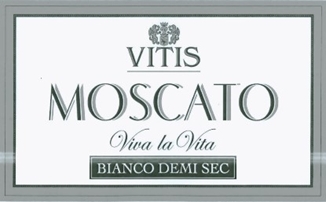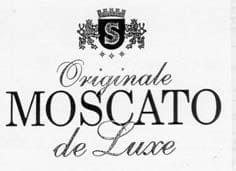- Home
- News & insights
- Insights
- No likelihood of con…
- On this page
26 August 2020
Brands update - September 2020 – 2 of 3 Insights
Supreme Court in Slovakia: No likelihood of confusion between marks featuring Moscato as a dominant element
- QUICK READ
The facts
The Slovak company, HUBERT J.E. – the biggest and oldest producer of sparkling wine in Slovakia – applied to register the below mark in relation to sparkling wine and wine in class 33.

The application was opposed by another company that specialised in wines, Soare sekt, on the basis of:
- identity or similarity to its earlier trade mark (below) and the identity or similarity of goods covered by the sign (the earlier trade mark covers a broad range of goods in class 32 and alcoholic drinks other than beer in class 33), and
- identity or similarity to an unregistered sign which has acquired a distinctive character through use for identical or similar goods.

However, the opponent was unsuccessful. Its opposition was dismissed by the Industrial Property Office of the Slovak Republic. The dismissal was then upheld by the Regional Court as well as the Supreme Court of the Slovak Republic.
Findings of the authorities
It was found that there is no likelihood of confusion between the mark applied for and the earlier mark, even in the case of goods which are identical or similar. The authorities also held that neither the use of the unregistered sign "MOSCATO de Luxe" nor the acquisition of a distinctive character has been established.
In its decision, the Regional Court stated that, although the dominant element of both signs is the word "MOSCATO", it could not be assessed separately. This was because both marks contained other distinctive components such as "Vitis", "Viva la Vita" and "BIANCO DEMI SEC" or "S", "Originale" and "de Luxe" on the earlier mark.
According to the Regional Court, those elements affect the overall visual perception of the conflicting signs, particularly from the point of view of the relevant consumer.
The Regional Court further held that the word element "Moscato" directly evokes a classification of wine for the relevant consumers, even if they do not associate it with a specific grape variety due to their lack of understanding of the Italian language. This verbal element is thus considered to be descriptive and, from the consumer's point of view, non-distinctive.
However, the opponent argued that the dominant element "MOSCATO" evokes the name or identity of the product for the average consumer. It claimed the average consumer is guided by the word "MOSCATO" and does not examine details such as the coats of arms on the marks, which are a non-dominant, complementary element.
The Supreme Court's ruling
The Supreme Court disagreed with the opponent's argument, upholding the previous decisions and concluding that for an average consumer, the sign "MOSCATO" directly evokes the Muscat grape variety. Therefore, this element does not have a distinctive character and cannot be considered when examining the similarity of the conflicting marks.
The Supreme Court also found that the distinctive elements of the marks were the coats of arms containing the elements 'Vitis' or 'S' together with the words "Viva la Vita" and "BIANCO DEMI SEC" or "Originale" and "de Luxe". Given that the average consumer perceives the sign as a whole, if the sign contains other distinctive elements, it must be held that there is no likelihood of confusion between the signs.
The Supreme Court therefore concluded that the graphic element of the sign, the coat of arms, the different font, as well as another verbal element in the sign, must be regarded as a strong distinctive element, and held that the marks in question are not similar where the relevant public is concerned.
Case reference: Najvyšší súd Slovenskej republiky (Supreme Court of the Slovak Republic) 26 February 2020 3Spv/1/2019
In this series
The fashion industry and the skull: same device element, same style – but no likelihood of confusion
26 August 2020
by Marie Keup
Supreme Court in Slovakia: No likelihood of confusion between marks featuring Moscato as a dominant element
26 August 2020
Related Insights
Slovakian top-level domain authority (.sk) not individually liable for IP infringement
by Ján Lazur, LL.M. and Zoltán Nagy


